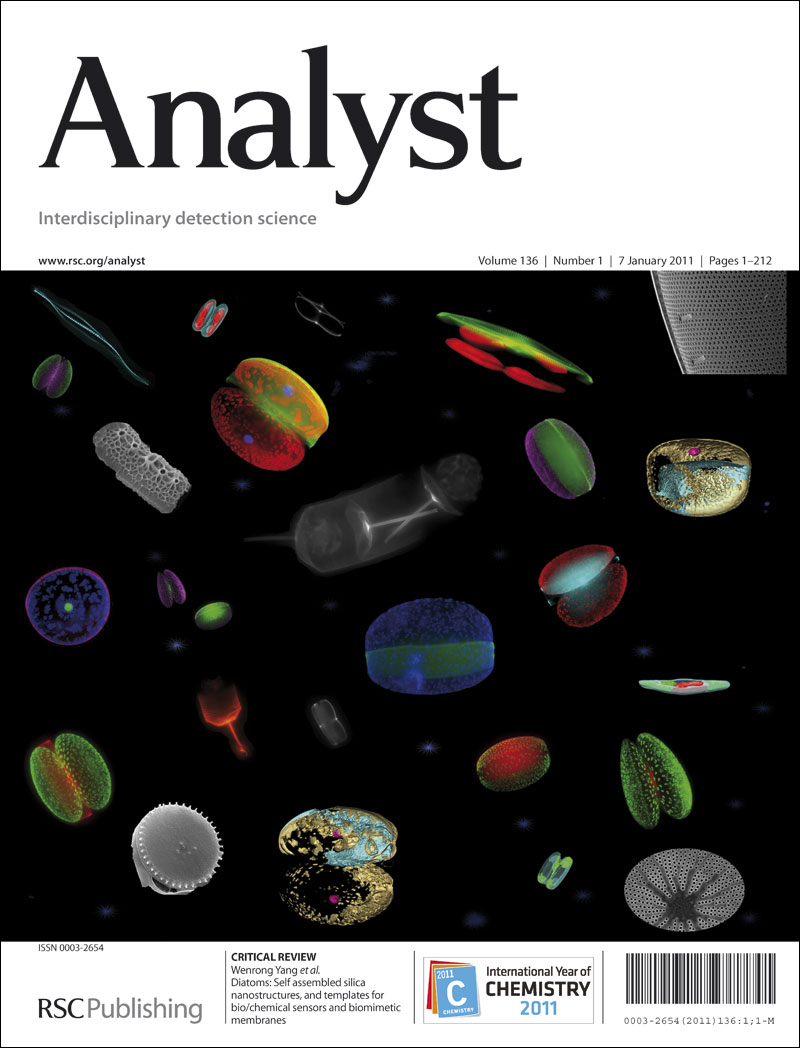Encapsulating Cu NCs with aggregation-induced emission into metal–organic framework ZIF-8 as a novel fluorescent nanoprobe for the highly sensitive detection of felodipine
IF 3.6
3区 化学
Q2 CHEMISTRY, ANALYTICAL
引用次数: 0
Abstract
Fluorescent metal–organic framework nanocomposites (f-MOFs) have been gaining increasing attention in the fields of chemosensors and biosensors due to their unique signal amplification mechanisms and improved selectivity. However, most f-MOFs are constructed by encapsulating fluorescent labelling agents into frameworks via host–guest interactions. The notorious aggregation-caused quenching effect of these fluorescent labelling agents often leads to a decreased fluorescent quantum yield in f-MOFs. Herein, a novel fluorescent nanocomposite, Cu NCs@ZIF-8, was designed and prepared by encapsulating copper nanoclusters (Cu NCs) with aggregation-induced emission (AIE) effects into zeolitic imidazolate framework ZIF-8 through electrostatic attraction. Owing to the AIE effect of Cu NCs and the spatial confinement of ZIF-8, the intramolecular motion of surface ligand hydrolipidic acid (DHLA) in Cu NCs was restricted, resulting in the formation of a highly emissive nanocomposite, Cu NCs@ZIF-8. Intriguingly, the UV-Vis absorption spectrum of felodipine overlaps with the excitation spectrum of Cu NCs@ZIF-8. Therefore, a novel fluorescent nanoprobe based on Cu NCs@ZIF-8 was developed for the highly sensitive detection of felodipine via the inner-filtration effect mechanism. Under optimal detection conditions, the linear response range of Cu NCs@ZIF-8 for felodipine was found to be 1–25 μM, with a detection of limit of 0.09 μM. While determining the labelling-amount percentage in commercially available felodipine tablets, the experimental results validated that the proposed Cu NCs@ZIF-8 nanoprobe exhibits good selectivity and excellent accuracy. This expands the potential applications of fluorescent metal–organic frameworks encapsulated with metal nanoclusters exhibiting AIE properties, positioning them as fluorescent nanoprobes for pharmaceutical quality control.

求助全文
约1分钟内获得全文
求助全文
来源期刊

Analyst
化学-分析化学
CiteScore
7.80
自引率
4.80%
发文量
636
审稿时长
1.9 months
期刊介绍:
"Analyst" journal is the home of premier fundamental discoveries, inventions and applications in the analytical and bioanalytical sciences.
 求助内容:
求助内容: 应助结果提醒方式:
应助结果提醒方式:


